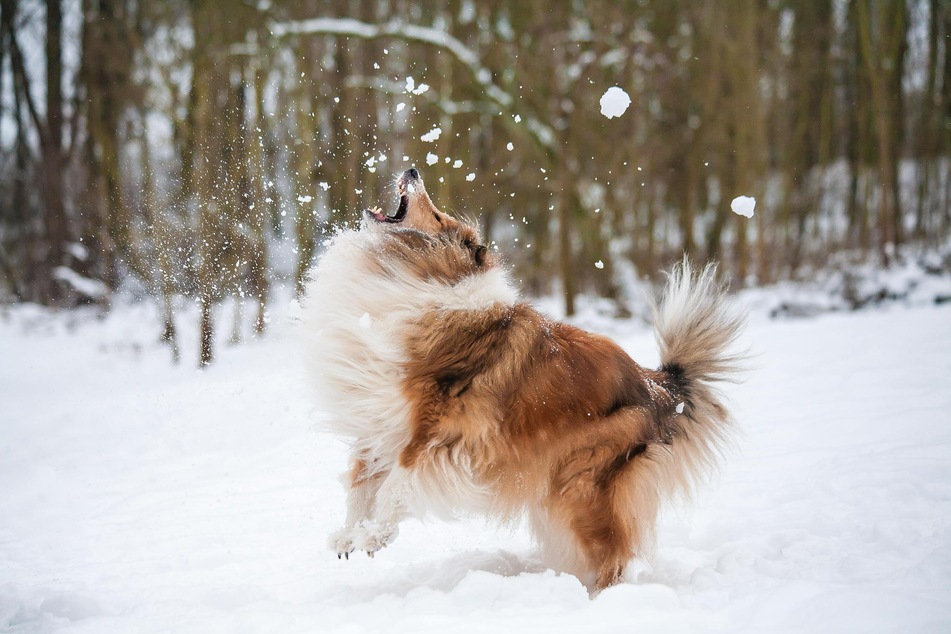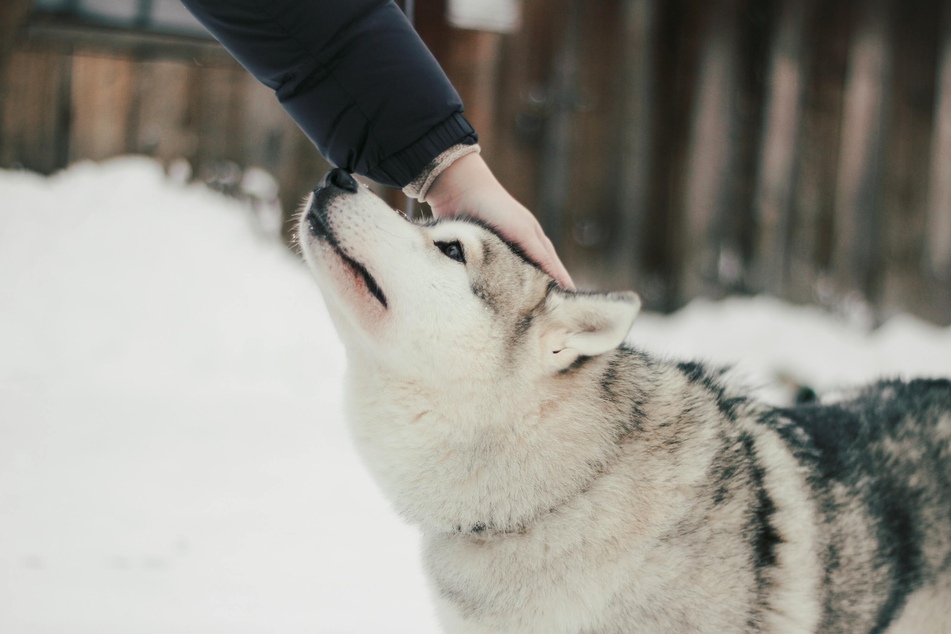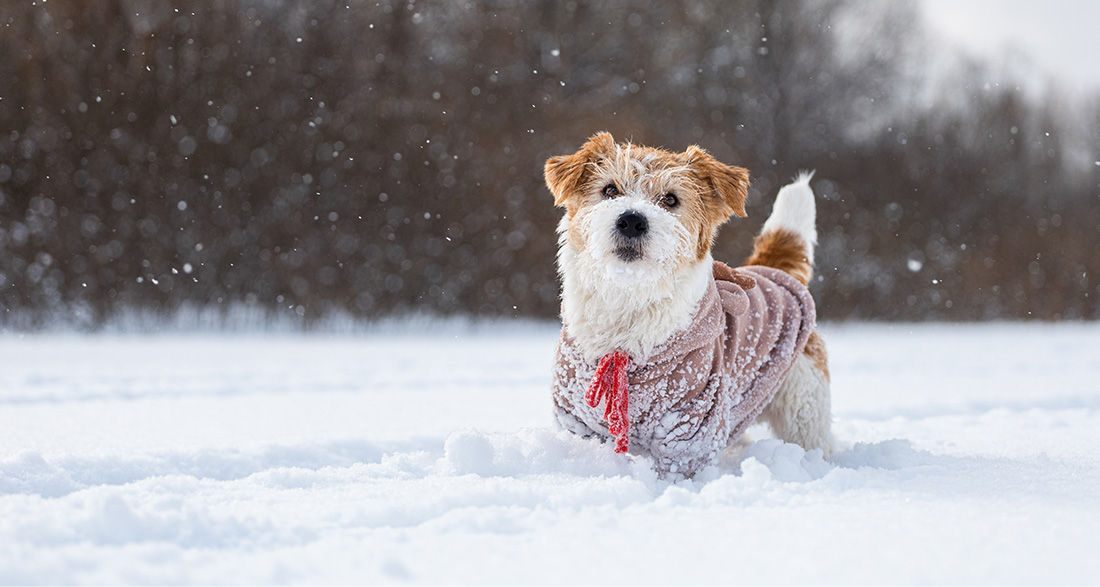When it snows, both children and many dogs enjoy playing in the snow. During these snowy activities, it’s not uncommon for dogs to occasionally ingest some snow. However, snow eating is not always harmless for dogs.
Some dogs love playing and frolicking in the wintry snowscape, and while doing so, they may end up eating snow.
Dogs often eat snow not because they’re hungry or thirsty, but out of curiosity and sheer enjoyment.
Catching snowflakes or snowballs provides an exciting change from the usual sticks or balls. The melting of snow on their tongues is particularly enticing, leading some dogs to consume larger quantities. However, this is not always harmless, as not all dogs tolerate eating snow.
This dog guide explains the potential health consequences of this behavior and how you can help your dog with physical discomfort.
Why should dogs not eat snow?
Snow is often contaminated with dirt, grit, and road salt, which can cause injuries and inflammation in the dog’s digestive organs.
Additionally, snow is ice-cold. Excessive consumption of snow can lead to irritation of the stomach lining in some dogs. In veterinary medicine, such gastric irritation due to cold is referred to as snow gastritis.
Symptoms of snow gastritis
A dog showing symptoms of snow gastritis may exhibit the following:
- Increased salivation
- Gagging
- Flatulence
- Stomach sounds
- Vomiting
- Diarrhea (sometimes bloody)
- Coughing
- Fatigue
- Loss of appetite
- Abdominal pain
- Tension in the abdominal region
- Arching of the back
If a dog shows symptoms of snow gastritis, it should be examined by a veterinarian.
In most cases, simply refraining from feeding the dog for a day helps. A helpful home remedy for snow gastritis in dogs is a bland diet, such as cottage cheese, rice, and boiled chicken.
If the dog’s condition does not improve or if symptoms like bloody diarrhea or vomiting occur, dog owners should consult a vet.

Dog eating snow: What to do
To avoid risks associated with eating snow, dog owners should train their dogs to refrain from this behavior, either by discouraging them or teaching them not to eat snow from a young age.
Preventing snow eating:
One straightforward but effective approach is to give the dog a stop signal when it shows a willingness to eat snow. This command can be a recall like “Come here” or a simple “No.”
It is crucial that the stop signal is delivered calmly, decisively, and at the right moment, before the dog starts eating snow. If the dog responds to the signal and stops eating snow, it can be praised. This positive reinforcement makes it worthwhile for the dog not to eat snow. It takes some time and many repetitions for the dog to stop eating snow.
Offering a treat as an alternative when the dog eats snow is not helpful. The dog might associate eating snow with always getting a treat or reward. Due to this connection, it will continue eating snow in the future.

Preventing snow eating
When playing in the snow, dogs find it tempting to eat it. To avoid encouraging the dog to eat snow, owners should refrain from playing search and fetch games with the dog in deep snow. The dog is not the ideal playmate for a snowball fight either.
If owners cannot prevent the dog from eating snow, they can use a muzzle on the dog when there is snow.
During winter walks with the dog, it’s important not only to prevent the dog from eating too much snow but also to ensure that the dog is not shivering or freezing. Keeping the dog in motion is the best way to prevent it from getting too cold.


